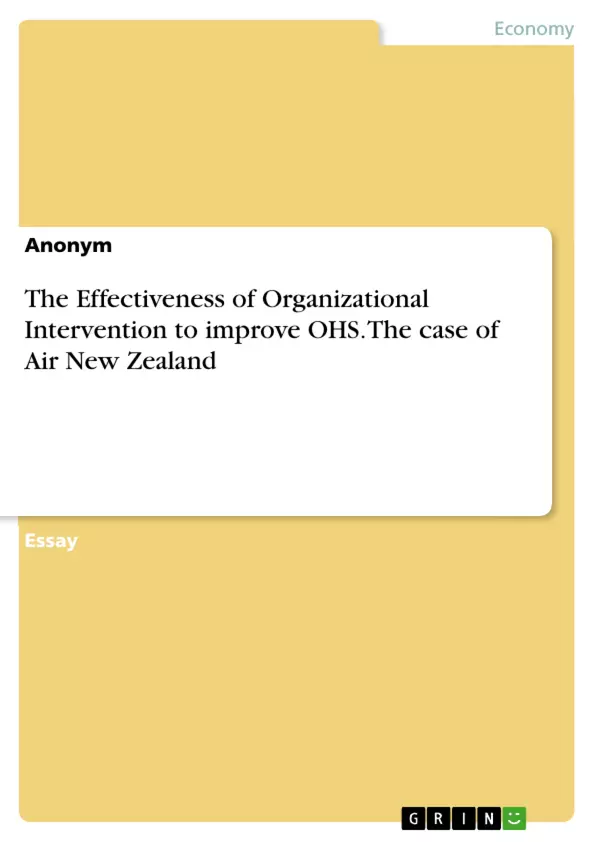In 2010, an estimated six hundred to nine hundred New Zealanders died of work-related diseases and a further 30,000 people develop serious but non-fatal work-related ill-health (Ministry of Business, Innovation and Employment (MBIE), 2013, p. 1). In the vast majority of cases, these events were preventable.
Through the Health and Safety at Work Act (HSWA) 2015, mandatory duties are placed on persons conducting a business or undertaking (PCBU) to ensure that potential work-related health and safety risks are being eliminated or minimised, so as far as is reasonably practicable (WorkSafe, 2016).
Therefore, executives (e.g., CEO) and board directors must exercise due diligence on health and safety by profiling the risk of an organisation's operations, understanding the key controls in place and setting a system providing data on whether these controls are working.
Beyond these mandatory duties, leaders need to demonstrate to their employees and other stakeholders (e.g., suppliers, customers, shareholders) that they mean it by recognising the benefits of supporting the general health and wellbeing of their workers(The Institute of Directors, 2021).
Inhaltsverzeichnis (Table of Contents)
- Introduction
- Strategic planning and decision making processes
- The evaluation of the effectiveness of a specific organisational intervention designed to improve OHS
- The case of Air New Zealand
- Conclusion
- References
Zielsetzung und Themenschwerpunkte (Objectives and Key Themes)
This paper explores the effectiveness of a specific organizational intervention designed to enhance Occupational Health and Safety (OHS) within the context of Air New Zealand. It investigates the importance of a strategic approach to health and safety, highlighting the roles of leadership, risk management, and worker participation.
- Strategic planning and decision-making in OHS
- The importance of a comprehensive workplace health and wellbeing agenda
- The role of leadership in promoting OHS
- The effectiveness of interventions aimed at improving OHS
- Case study analysis of Air New Zealand
Zusammenfassung der Kapitel (Chapter Summaries)
The introduction highlights the significance of workplace health and safety in New Zealand, emphasizing the need for organizations to proactively address and mitigate risks. It introduces the concept of due diligence and the responsibilities of executives and board directors in ensuring a safe work environment.
Chapter 2 delves into the importance of strategic planning and decision-making processes within OHS. It underscores the need for organizations to engage workers in identifying and reporting work-related ill-health, and to use data from health and exposure monitoring to continually improve safety practices. The chapter also discusses the concept of visual learning and how organizations can effectively communicate their OHS strategies to employees.
Schlüsselwörter (Keywords)
This work focuses on the evaluation of occupational health and safety (OHS) interventions, strategic planning and decision-making, leadership in OHS, workplace health and wellbeing, risk management, worker engagement, and the case study of Air New Zealand.
- Quote paper
- Anonym (Author), 2022, The Effectiveness of Organizational Intervention to improve OHS. The case of Air New Zealand, Munich, GRIN Verlag, https://www.grin.com/document/1247258



